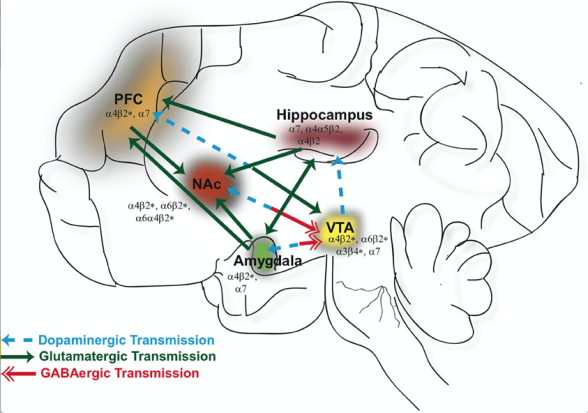 We have not had a monthly research wrap for a while now, due to Dr Ian McDonald changing his career direction. We would however, like to formally thank Ian for his prior voluntary contribution to DAI, and we wish him well in his new position.
We have not had a monthly research wrap for a while now, due to Dr Ian McDonald changing his career direction. We would however, like to formally thank Ian for his prior voluntary contribution to DAI, and we wish him well in his new position.
This Research Wrap written on 17 October 2015, by Dr Shibley Rahman is the beginning of our new monthly series. We are privileged Dr Rahman has agreed to provide us with a monthly #ResearchWrap for our members, outlining the latest research on either given topics, such as risk this month, or a general overview of the most recent research.
People with dementia are often very interested in reading about the latest research, but perhaps due to symptoms of dementia, or to not having an academic or medical/nursing background ourselves, we may find it difficult to understand. Thank you Shibley, we greatly appreciate your support.
A focus on risk
Risk is a theme which is highly pervasive in global policy. The term is used in a number of contexts, including how people living with dementia negotiate threats in the outside world as well as whether drug companies wish to invest on research and development in possible future cures.
The most famous definition arguably of risk comes from Knight (1921).
"To preserve the distinction . . . between the measurable uncertainty and an unmeasurable one we may use the term “risk” to designate the former and the term “uncertainty” for the latter. "(p. 233)
In this, risk relates to objective probabilities, whereas uncertainty relates to subjective probabilities. Actually, arguably a criticism of Knight’s definition is the obvious one that it really is not a definition of risk. According to common usage, risk entails both uncertainty and exposure—possible consequences.
The general implications for risk for living beyond a diagnosis of dementia have strong parallels with the discussion of risk in general.
According to an article by Glyn Horton called "Defining risk", Horton writes:
"Risk is a condition of individuals—humans and animals—that are self-aware. Organisations, companies, and governments are not self-aware, so they are incapable of being at risk. Rather, they are conduits through which individuals— members, investors, employees, voters, and such—take risk."
Awareness and insight are very important themes for how people with dementia 'deal with' their symptoms. For example, one can argue that any person is not perceiving himself as suffering if he has complete ignorance of his symptoms, although the suffering may definitely exist and indeed be very visible to others.
Jo Moriarty and Jill Manthorpe have established an interest in the area of risk, as shown in these papers. On 9 November 2010, the Department of Health published their very helpful contribution, found here, "Nothing ventured, nothing gained: risk guidance for people with dementia".
I feel risk is highly relevant to policy around the world, not least in how you would cope with a 'personal budget'. In my own paper in Brain (1999), I was the first person in the world (to my knowledge) to provide objective knowledge and a synthesis of how and why people with behavioural variant frontotemporal dementia can show remarkable risk taking tendencies.
This risk taking can be quite obviously exhibited in the presentation of such individuals at their diagnosis, in unusual behaviours for the person involved. In my own paper, I argued that this risk taking paper was due to something very awry in the structure and functioning of a part of the brain called the 'ventromedial prefrontal cortex' (a part of the brain at the front near the eye in fact).
For my first research round up I would like to draw attention to an excellent paper from Nachev and colleagues on the exquisite part of the brain called the 'nucleus accumbent' on risk control.
Whilst there have been very many papers looking at what the nucleus accumbens does in other animals such as rats, we have a relatively under-developed understanding of what this structure does in humans in real life.
The authors write:
"Combining a psychometric index of risky decision-making with transient electrical modulation of the span, here we reveal profound, highly dynamic alteration of the relation between probability of reward and choice during therapeutic deep brain stimulation in four patients with treatment-resistant psychiatric disease."
This is very interesting as this had not been demonstrated before so well.
The authors further describe how the stimulation of this region electrically can alter risk control:
"Short-lived phasic electrical stimulation of the region of the dynamically altered risk behaviour, transiently shifting the psychometric function towards more risky decisions only for the duration of stimulation. A critical, on-line role of control is thereby established."
Abnormal risk-taking behaviour of some people living beyond the dementia are therefore most likely to have a clear explanation in terms of how the brain works.
I am not particularly surprised to hear of the proposed involved of the nucleus accumbens as it works very closely with the ventromedial prefrontal cortex.
I thought this paper was a valuable contribution in trying to apply what we knew of how the brain handles risk in other animals to what happens in humans. What happens when we negotiate risk is highly relevant to the risk profiles of some people living beyond a diagnosis of dementia (which can be highly abnormal). Understanding them offers a possible explanation to those people living with dementia about symptoms which could be troubling them or those closest to them. By knowing which brain areas are affected predominantly offers a way of improving symptoms in future, but we should be open minded about whether this is necessarily pharmacological or not.
In summary, this new paper on Brain is a very helpful new contribution which makes sense given the overall literature and direction of travel of policy worldwide.
References
Knight, Frank H. 1921. Risk, Uncertainty, and Profit. New York: Hart, Schaffner, and Marx.
Nachev P, Lopez-Sosa F, Gonzalez-Rosa JJ, Galarza A, Avecillas J, Pineda-Pardo JA, Lopez-Ibor JJ, Reneses B, Barcia JA, Strange B. Dynamic risk control by human nucleus accumbens. Brain. 2015 Oct 1. pii: awv285. [Epub ahead of print]
Author: Dr Shibley Rahman
Editor: Kate Swaffer
